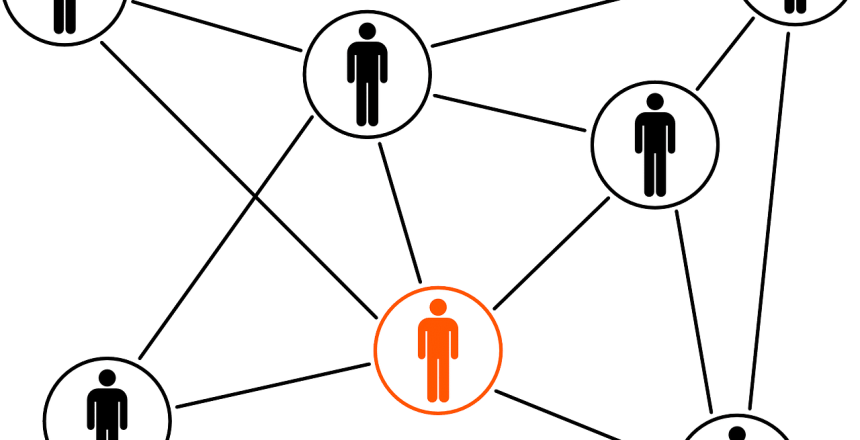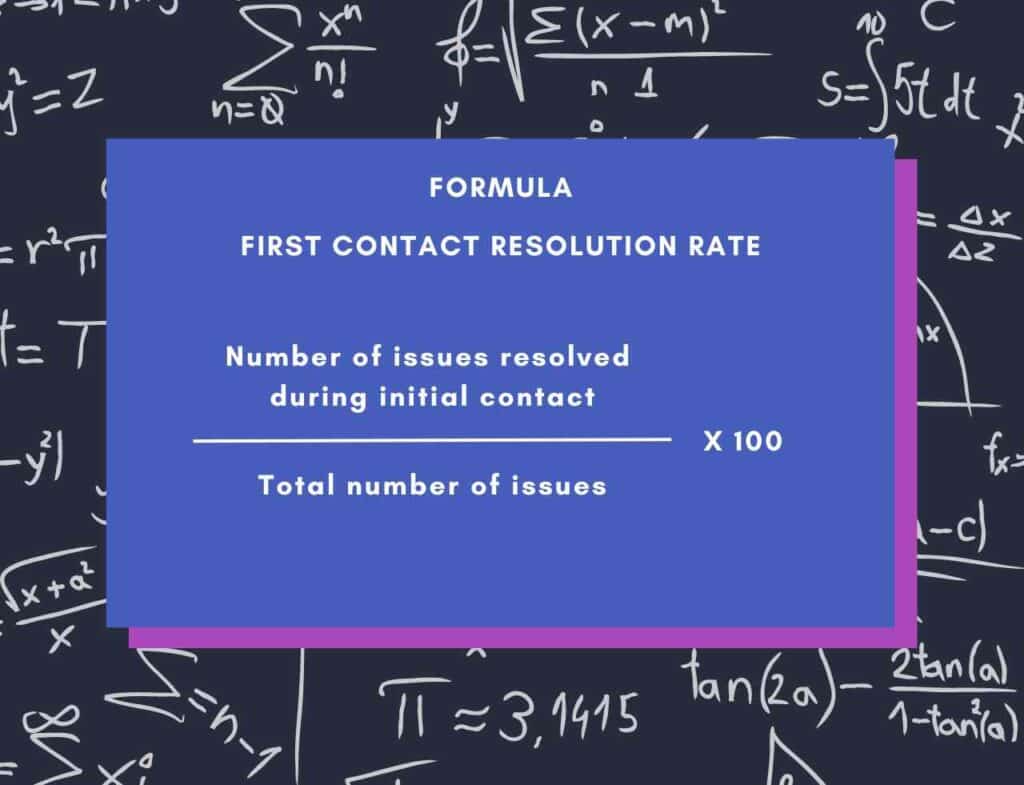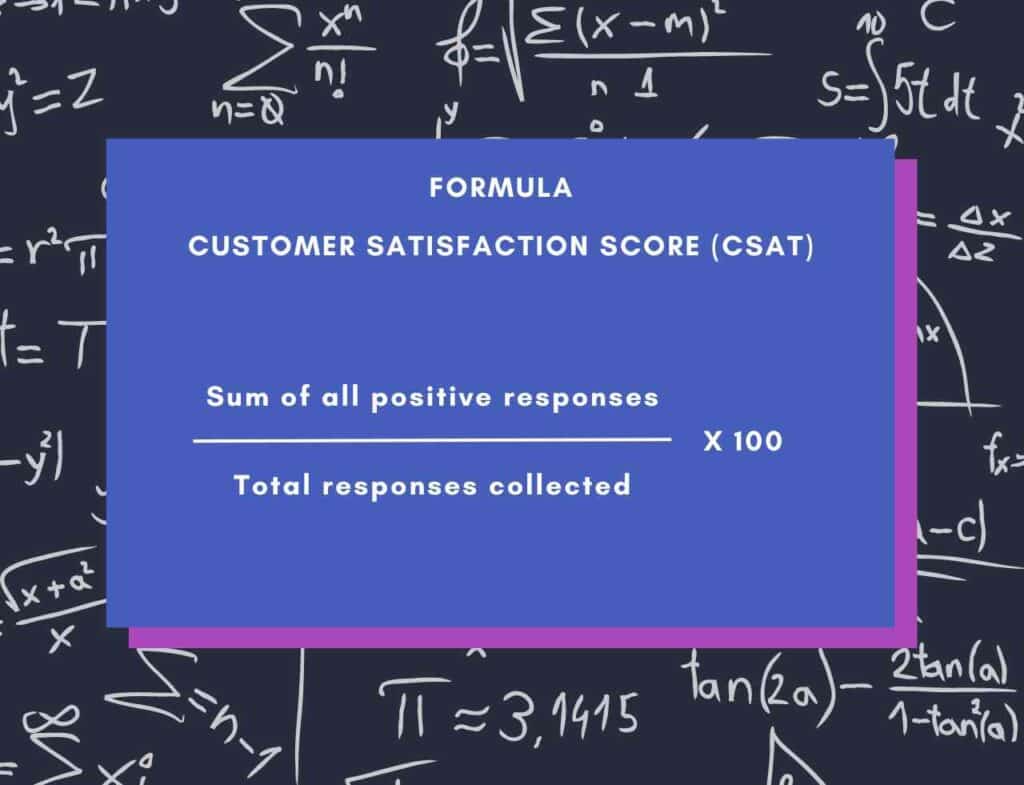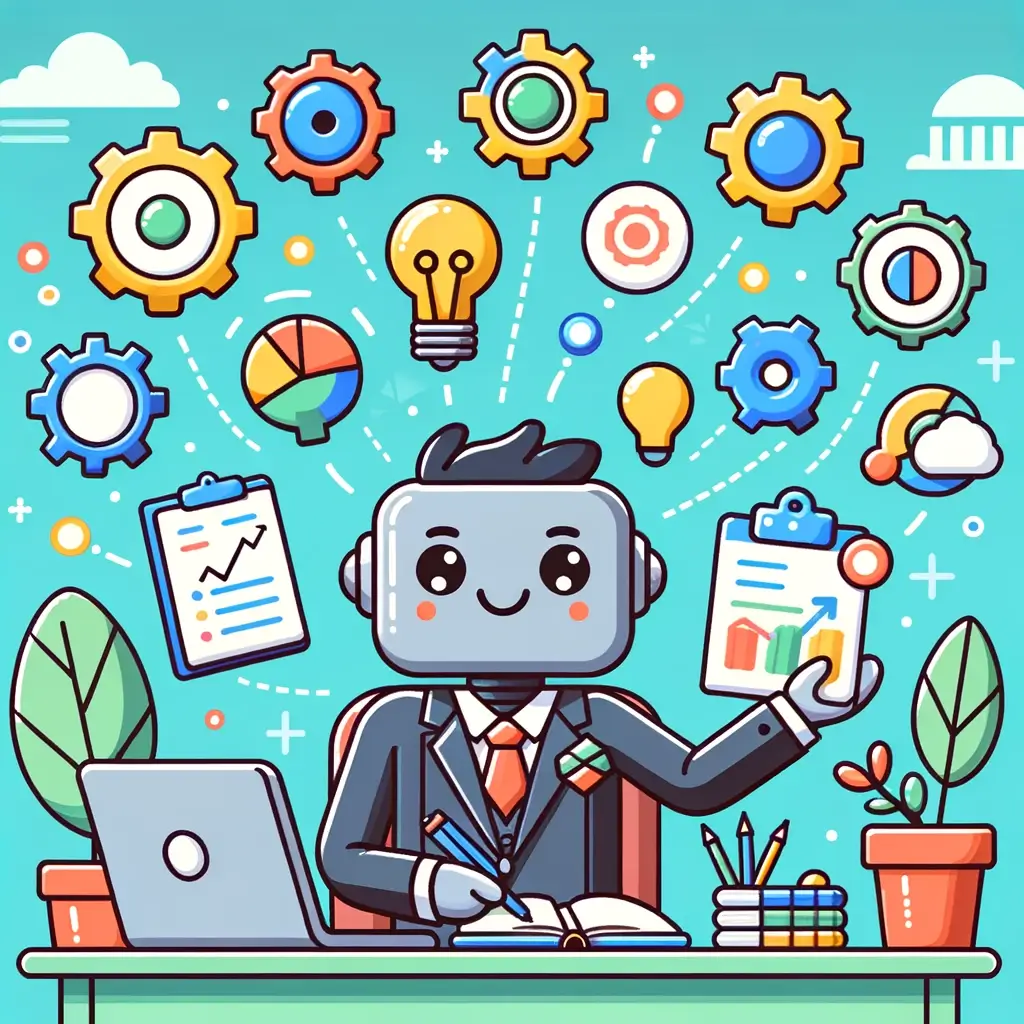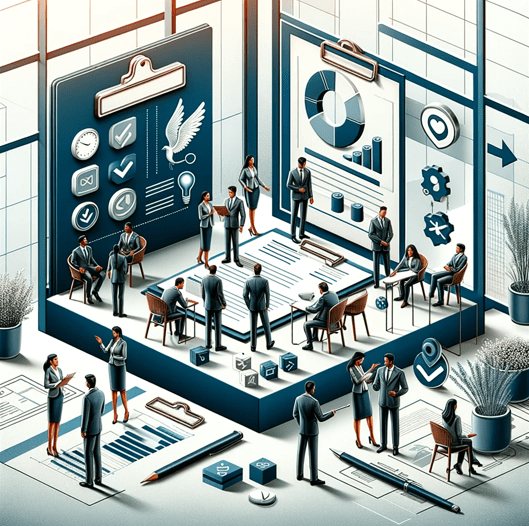Liaising with customers isn’t just a task—it’s the cornerstone of successful businesses.
It involves communicating with customers to resolve issues, provide information and ensure their satisfaction.
Establishing strong relationships with customers, addressing their needs, and ensuring their satisfaction can lead to increased loyalty, repeat business, and a positive reputation.
Good customer service can build loyalty and repeat business, while poor customer service can damage a company’s reputation.
But what constitutes ‘good’ customer service?
And how can businesses effectively liaise with their customers to ensure they’re not just satisfied, but delighted?
Let’s delve deeper into the art of customer liaison and its significance in today’s business world.
*If you are also interested in the relationship between technologies and customer service strategies, here is another blog post for you: Tech’s Role in Customer Service Strategies: A Deep Dive*
4 Key Strategies for Effective Customer Liaison
There are a few key things to keep in mind when liaising with customers:
1. Be responsive – Customers should feel like their concerns are being heard and that they are being dealt with in a timely manner.
2. Be polite and professional – Even if the customer is frustrated, it’s important to remain calm and respectful. This will help diffuse the situation and hopefully lead to a positive outcome.
3. Be knowledgeable – Customers will have questions, so it’s important to be prepared with answers. If you don’t know the answer to a question, be honest and say so. Then do your best to find an answer or get back to the customer as soon as possible.
4. Follow up – Once an issue has been resolved, follow up with the customer to make sure they’re satisfied. This shows that you care about their experience and want to ensure they had a positive one.
Liaising with customers can be challenging, but it’s an important part of running a successful business!
How do you Liaise with a Customer?
Businesses have an array of methods to communicate with their customers. Each has its unique advantages and challenges.
Here’s a breakdown:
Social Media Platforms (Facebook, Twitter, Instagram, etc.)
- Pros: Direct access to customers, real-time engagement, an opportunity for public relations, and showcasing brand personality.
- Cons: Negative feedback is public, requires consistent monitoring, potential for public relations issues if handled incorrectly.
Why Choose This?
For businesses aiming to reach a younger demographic or wanting a more informal, instantaneous connection with their audience.
Website Contact Forms
- Pros: Centralized communication, easy tracking, can be integrated with CRM systems.
- Cons: Can be perceived as impersonal, dependent on website uptime, and potential for missed communications.
Why Choose This?
Ideal for businesses that prefer organized, structured communication and those looking to integrate customer feedback directly into their systems.
Live Chat
- Pros: Instant response, allows for multitasking, often results in higher customer satisfaction.
- Cons: Requires dedicated staff, can feel impersonal if not executed correctly.
Why Choose This?
Best for businesses with the resources to offer real-time support and those wanting to provide immediate answers to customer queries.
- Pros: Formal, traceable, can be organized and prioritized, allows for in-depth communication.
- Cons: Not real-time, can be overlooked or land in spam, may seem too formal for some customers.
Why Choose This?
Suitable for businesses seeking a more formal mode of communication, and those wanting a record of interactions.
Telephone
- Pros: Personal touch, real-time, can resolve complex issues faster, builds stronger rapport.
- Cons: Requires dedicated staff, potential for long wait times, can be expensive.
Why Choose This?
For businesses that value a personal touch and are equipped to handle real-time voice interactions.
In today’s digital age, combining multiple methods and using technologies might be the most effective way to ensure comprehensive customer outreach and satisfaction. Tailoring your communication methods to your business type and customer preferences is key to successful liaising.
Benefits of Good Customer Service
There are several benefits of delivering exceptional customer service:
- Increased Sales: Quality customer service can lead to repeat business and referrals, bolstering sales.
- Improved Reputation: A good reputation is often built on positive word-of-mouth, a direct outcome of impressive customer service.
- Higher Customer Retention: Satisfied customers are more likely to stick around, ensuring consistent business even during challenging times.
- Reduced Costs through Customer Loyalty: It’s more cost-effective to retain a loyal customer than to acquire a new one. Investing in customer satisfaction can therefore be a financially shrewd move.
Example: Zappos, an online shoe and clothing retailer, is often heralded for its exceptional customer service. From offering free returns and speedy shipping to providing a 24/7 customer hotline, Zappos has made customer satisfaction its top priority. This commitment hasn’t gone unnoticed: the company boasts a high customer retention rate and many shoppers specifically choose Zappos over other retailers because of the positive service they’ve experienced. Zappos’ success story underscores how integral good customer service is to a company’s reputation and bottom line.
What are the Consequences of Poor Customer Service?
Poor customer service can have a number of negative consequences, including:
- Decreased sales – If customers are unhappy with your service, they’re less likely to do business with you again or recommend you to others.
- Damaged reputation – Negative reviews and word-of-mouth can damage your business’s reputation.
- Increased costs – It costs more to acquire new customers than it does to retain existing ones.
Overcoming Common Customer Service Challenges
What are some Common Customer Service Issues?
Customer service issues can vary greatly from business to business. However, there are some common issues that businesses often face:
- Dealing with unhappy customers
- Answering customer questions
- Providing product or service information
- Resolving customer complaints
- Processing returns or refunds
How can you Overcome these issues?
Here are 3 efficient ways!
1- Addressing unhappy customers with empathy and understanding
When faced with unhappy customers, empathy, and understanding are essential.
Also, active listening helps identify their concerns, and working towards a resolution can turn negative experiences into positive ones.
Finally, acknowledging the issue, apologizing when necessary, and offering a solution can go a long way in restoring customer satisfaction.
2- Developing a comprehensive knowledge base for common inquiries
A well-maintained knowledge base, including FAQs and troubleshooting guides, can expedite issue resolution and enhance customer satisfaction.
By providing customers with immediate access to relevant information, businesses can reduce the number of queries directed at customer support, allowing representatives to focus on more complex issues.
3- Implementing efficient processes for complaint resolution and refunds
Streamlined processes for handling complaints and processing refunds demonstrate a company’s commitment to customer satisfaction.
Establish clear guidelines and protocols for customer service representatives to follow in these situations.
This ensures consistency and efficiency in resolving customer concerns, ultimately leading to increased customer loyalty and trust.
How to Measure Performance in Customer Service?
When it comes to measuring performance in customer service, there are a few key metrics you should always keep an eye on. Here are four of the most important ones:
First Contact Resolution Rate
This is the percentage of customers whose issue is resolved during their first contact with customer service. A high first-contact resolution rate is a good indicator that your customer service team is efficient and effective.
Customer Satisfaction Score
Customer satisfaction score (or CSAT) measures how happy your customers are with the service they’ve received. A high CSAT score means that your customers are generally happy with your customer service.
According to Hubspot, it’s the sum of all positive responses, divided by the total responses collected, then multiplied by 100 (As you can see in the image above)
Net Promoter Score
NPS is a metric that quantifies the likelihood of your customers suggesting your business to others. It captures the essence of customer satisfaction and loyalty in one question:
“How probable is it that you’d recommend our services to someone you know, on a scale from 0 to 10?”
Customers’ scores classify them into three groups:
- Promoters (Scores 9-10): These are loyal enthusiasts who continue to buy from you and will likely refer others. They represent genuine satisfaction.
- Passives (Scores 7-8): These customers are neutral. They’re neither disappointed nor ecstatic. They might switch to competitors if given a chance.
- Detractors (Scores 0-6): These are unsatisfied customers who may share negative feedback with others.
To calculate the NPS:
NPS = Percentage of Promoters − Percentage of Detractors
For example, if out of 100 respondents, 60 are Promoters, 30 are Passives, and 10 are Detractors, the NPS would be:
NPS = 60% − 10% = 50
A positive NPS (anything above 0) is generally seen as good, and scores above 50 are exceptional. The NPS scale stretches from -100 (if every respondent was a Detractor) to +100 (if every respondent was a Promoter).
Average Handle Time
Average handle time (or AHT) measures the average amount of time it takes for a customer service agent to resolve an issue. A low AHT is a good indicator that your customer service team is efficient and effective.
These are just a few of the most important metrics you should keep an eye on when measuring performance in customer service. By tracking these metrics, you can get a good sense of how well your customer service team is doing and where there is room for improvement.
Imagine “TechBlitz”, a tech company. After releasing a software update, their customer service saw increased calls. To gauge efficiency, they measure AHT over a week:
- Total time on calls: 250 hours
- After-call tasks: 50 hours
Using the formula: AHT = Total Talk Time + After-Call Work TimeNumber of Calls
For TechBlitz: AHT = 250 + 50100 = 3 hours per call
Previously, before the update, their AHT was 1.5 hours. This increase suggests potential issues with the update or a need for agent training on the new software aspects.
By checking AHT, TechBlitz identified a potential area for improvement.
Developing a Comprehensive Knowledge Base for Common Inquiries
A comprehensive knowledge base is a cornerstone of excellent customer service. By empowering customers with the ability to find answers independently, businesses can improve overall customer satisfaction while reducing the strain on customer service representatives.
Here’s a step-by-step guide:
- Identify Common Inquiries: Analyze customer interactions across various channels to pinpoint the most frequent questions and concerns. This analysis will guide the topics to be covered in your knowledge base.
- Organize Content Logically: Group topics into intuitive categories or sections. Use clear and descriptive titles to help users swiftly locate the information they’re after.
- Write Clear and Concise Articles: Use simple language and shun jargon. Complex topics should be divided into smaller chunks or steps to enhance comprehension.
- Include Helpful Visuals: Screenshots, diagrams, and videos can elucidate key points and engage users. They can also simplify understanding of complex processes or step-by-step instructions.
- Ensure Up-to-Date Content: Regular reviews of your knowledge base are essential. Update product, service, or policy information as required and weed out any outdated content.
- Enable Efficient Search Functionality: Implement a search feature and optimize your content with relevant keywords to enhance user experience.
- Monitor and Analyze Feedback: Collect feedback on the utility of your knowledge base. Analyze user behavior, like popular articles or search queries, to continually refine and optimize.
By diligently developing and maintaining a comprehensive knowledge base, businesses can tackle common inquiries head-on, leading to both empowered customers and a more efficient customer service team.
Conclusion
In a world where businesses vie for customer attention, mastering liaison can set you apart.
By honing communication, adopting modern strategies, and prioritizing excellent service, companies don’t just satisfy customers—they build lasting relationships!
Reference
- Geckoboard. “First Contact Resolution Rate (FCR)”.
- Birkett, Alex. “What Is Customer Satisfaction Score (CSAT)?”, Hubspot, 2021.

